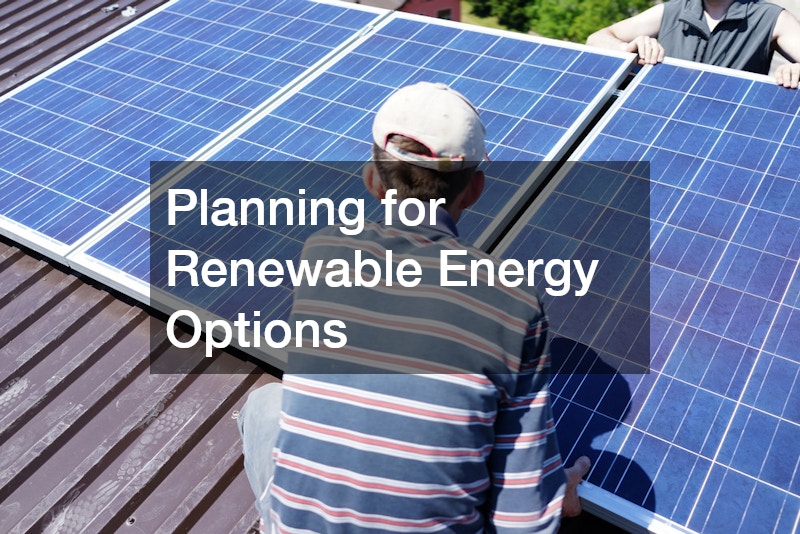When it comes to home renovations, energy efficiency is no longer just a trend—it’s a necessity. With rising energy costs and growing environmental concerns, many homeowners are shifting their focus toward creating spaces that consume less, waste less, and contribute to a more sustainable future. Whether you’re preparing your house for a major renovation or considering minor updates, improving energy performance can have lasting impacts on your comfort, utility bills, and environmental footprint.
Planning for an energy-efficient home doesn’t have to be overwhelming. By breaking your project into manageable parts and focusing on upgrades that deliver the most value, you can transform your home into a more efficient and eco-friendly space. This guide will help you evaluate, prioritize, and implement sustainable changes room by room. Think of it as your personal remodeling checklist—a practical roadmap for making smart, cost-effective decisions during every phase of your home renovation journey.
Assessing Your Home’s Energy Use

Before diving into any remodeling project, it’s crucial to first understand how your home is currently performing in terms of energy efficiency. Jumping straight into upgrades without this foundational knowledge can lead to misplaced priorities and missed opportunities. That’s where a comprehensive energy audit becomes invaluable. Conducted by a certified professional or through a utility-sponsored program, an energy audit offers a detailed look at your home’s energy consumption and highlights exactly where inefficiencies are occurring. It evaluates everything from your insulation levels and HVAC system performance to the integrity of windows and the behavior of your energy usage patterns.
The audit often reveals issues that aren’t visible to the naked eye but have a significant impact on your comfort and utility bills. For example, your home may have hidden air leaks in the attic, walls, or foundation that are constantly letting conditioned air escape, making your heating and cooling systems work overtime. You might also discover that older appliances are using far more energy than necessary, or that your windows are outdated and letting drafts in during the winter and heat in during the summer. Without this assessment, these silent energy drains can go unnoticed, undermining even the most well-intentioned improvements.
To get the most accurate picture of your home’s performance, consider hiring professionals who specialize in electrical services to conduct a detailed inspection of your systems. They can assess your wiring, outlets, lighting fixtures, and energy usage patterns, offering insight into where upgrades will make the biggest difference. This step forms the foundation of any successful remodeling checklist, ensuring that you target the most pressing issues first rather than guessing at potential problems.
Upgrading Insulation and Sealing Air Leaks
Proper insulation and airtight sealing are two of the most cost-effective ways to increase your home’s energy efficiency. Without them, even the most advanced heating and cooling systems will struggle to maintain consistent indoor temperatures. Upgrading insulation in attics, walls, and crawl spaces can significantly reduce energy waste, while sealing gaps around windows, doors, and ductwork keeps conditioned air inside where it belongs.
Beyond comfort and savings, insulation upgrades can also address hidden problems like moisture intrusion. This is where working with a waterproofing contractor becomes beneficial—they can ensure that insulation efforts don’t inadvertently trap water or allow leaks to persist behind walls. These experts not only help boost thermal performance but also protect your home from mold and structural damage. Including insulation and sealing on your remodeling checklist guarantees you’re covering both efficiency and durability in your renovation plan.
Choosing Energy-Efficient Windows and Doors
Windows and doors are fundamental to your home’s thermal envelope, yet they often don’t receive the attention they deserve during renovation planning. Many homeowners focus on high-visibility upgrades like new flooring or kitchen finishes, overlooking the fact that windows and doors are constant points of interaction between the indoor and outdoor environments. In older homes, especially, original windows and doors may lack proper sealing, have single-pane glass, or be framed with materials that no longer meet modern efficiency standards. These issues can lead to significant energy loss, as conditioned air escapes and outdoor temperatures seep in, forcing your HVAC system to work harder than necessary.
Upgrading to energy-efficient windows and doors is one of the smartest investments you can make during a remodel. Modern window technologies, such as double or triple glazing, reduce heat transfer, while low-emissivity (low-E) coatings help reflect heat back into your home during winter and keep it out during the summer. Insulated frames—whether made from vinyl, fiberglass, or wood composites—add another layer of protection against drafts and temperature fluctuations. Energy-efficient doors offer similar benefits, with better sealing, core insulation, and weather-stripping features. These upgrades don’t just make your home more comfortable year-round; they also improve its resale value and reduce your overall carbon footprint.
When replacing windows and doors, it’s also important to consider how they integrate with the surrounding structure, particularly the roofline and exterior walls. This is why involving roofing experts in your renovation can be valuable—they ensure that the window and door installations are properly sealed and supported to prevent air and water infiltration. Factoring these upgrades into your remodeling checklist can lead to both immediate comfort improvements and long-term savings on energy bills.
Installing High-Efficiency HVAC Systems

Your home’s heating, ventilation, and air conditioning (HVAC) system is central to maintaining a comfortable indoor environment throughout the year. Whether it’s keeping your living space warm during the winter or cool in the summer, your HVAC system works hard to regulate temperature and air quality. Because of its continuous use, it also tends to be one of the largest contributors to household energy consumption. Older systems, especially those that haven’t been regularly maintained, often operate below peak efficiency.
Replacing an aging or underperforming unit with a high-efficiency HVAC system is one of the most impactful upgrades you can make in terms of both comfort and cost savings. Modern systems are designed to deliver consistent temperature control while using significantly less energy than their older counterparts. Features like variable-speed motors, smart thermostats, and zoned heating and cooling allow for more precise and adaptive climate management, reducing energy waste and extending the life of the system. In addition, high-efficiency models often include advanced filtration systems that improve indoor air quality—a bonus for households with allergies or respiratory concerns.
Before replacing your system, it’s wise to have it evaluated by professionals who specialize in HVAC repairs. These experts can determine whether your existing equipment can be optimized or if a full replacement is warranted. They’ll also help size the system correctly to your home’s square footage and insulation levels, which is crucial for efficiency. Including HVAC considerations in your remodeling checklist ensures that you’re not only upgrading for efficiency but also for longevity and reliability.
Switching to Energy-Saving Appliances
Appliances are another major contributor to your home’s energy use, and swapping out older models for ENERGY STAR-rated alternatives can result in noticeable savings. From refrigerators and dishwashers to laundry machines and ovens, modern appliances are designed to consume less electricity and water while maintaining high performance. These upgrades are especially impactful in homes with larger families or frequent usage.
As households become more connected and electric vehicles become more common, planning for future appliance needs is equally important. For example, coordinating with an EV charger installer can ensure your electrical panel is ready to support both efficient appliances and next-gen tech. This proactive thinking adds extra value to your remodeling checklist, allowing you to design a home that’s not only energy-efficient today but also future-ready.
Incorporating Smart Home Technology
Smart home technology is rapidly transforming how homeowners manage energy use, making it easier than ever to boost efficiency and reduce waste. Devices like programmable thermostats, smart lighting systems, motion sensors, and energy monitors allow for more precise control over energy consumption. These tools can learn from your daily routines, optimize heating and cooling schedules, and even provide real-time feedback on usage, helping you make smarter decisions about your home’s energy habits.
When upgrading to smart systems, it’s also a good time to think about what outdated components you’re replacing. Old thermostats, light fixtures, and wiring can pile up quickly during a tech overhaul. Partnering with a local scrap yard can help ensure that these materials are responsibly recycled instead of ending up in landfills. Not only does this align with energy-saving goals, but it also promotes sustainable waste management. Adding smart technology—and a plan for properly discarding old hardware—to your remodeling checklist can elevate both the performance and environmental impact of your home.
Maximizing Natural Light and Ventilation

Designing your home to make the most of natural light and airflow is a sustainable way to reduce your dependence on artificial lighting and climate control. Thoughtful window placement, open floor plans, and features like skylights or solar tubes can brighten spaces while promoting healthy indoor air quality. These elements not only reduce your energy usage but also improve the overall ambiance and livability of your home.
To truly take advantage of natural resources, sometimes you need to look beyond your home’s walls. Partnering with a tree service can help manage overgrown vegetation that may be blocking sunlight or airflow around your house. Proper pruning or removal can dramatically change the efficiency of your passive heating and cooling strategy. By adding this consideration to your remodeling checklist, you ensure that your energy improvements aren’t being overshadowed—literally—by your landscaping.
Using Sustainable Building Materials
The materials you choose for your remodel can have a lasting impact on your home’s environmental footprint. Sustainable options like reclaimed wood, recycled metal, low-VOC paints, and rapidly renewable resources (like bamboo or cork) help conserve natural resources and promote healthier indoor air quality. Selecting materials with durability and minimal environmental impact should be a top priority during any energy-conscious renovation.
Additionally, consider how your renovation waste is handled. Collaborating with companies that specialize in wood waste recycling ensures that discarded lumber and construction scraps are repurposed rather than sent to the landfill. This approach not only supports eco-friendly building practices but can also save you money on disposal fees. Adding sustainable materials and responsible waste handling to your remodeling checklist keeps your entire renovation aligned with your energy-efficient goals.
Enhancing Water Heating Efficiency
Water heating is often the second-largest energy expense in a household, and outdated or oversized systems can lead to unnecessary energy use. Upgrading to energy-efficient models like tankless water heaters or solar-assisted systems can significantly cut costs and reduce your home’s environmental impact. Additionally, insulating your water heater and pipes helps maintain water temperature with less effort.
Proper removal and disposal of old equipment are essential when replacing or upgrading water heating systems. Partnering with a reliable waste disposal service ensures that old tanks and plumbing materials are handled safely and in accordance with local regulations. Including water heating upgrades in your remodeling checklist gives you the chance to modernize a key system while responsibly managing renovation waste.
Planning for Renewable Energy Options

As renewable energy technology becomes more accessible, integrating options like solar panels, geothermal systems, or small wind turbines into your home is increasingly viable. These solutions not only lower utility bills but can also increase your home’s value and reduce your carbon footprint. Even if a full installation isn’t immediately feasible, preparing your home for future upgrades is a wise step.
If your project involves removing old infrastructure—such as outdated metal fixtures, wiring, or roofing materials—consider working with a metal recycling company. They can recover valuable materials while keeping recyclable debris out of landfills. Including renewable energy considerations in your remodeling checklist ensures that your home evolves with technology while staying committed to sustainability from start to finish.
Transforming your home into an energy-efficient haven isn’t just a matter of swapping out old lightbulbs or upgrading appliances—it’s a comprehensive approach that involves every system, surface, and structure. From foundational changes like insulation and HVAC to forward-thinking upgrades like smart tech and renewable energy prep, each element contributes to a greener, more cost-effective living space. A thoughtful remodel doesn’t just reduce monthly bills; it enhances comfort, increases property value, and supports the health of the environment.
Whether you’re taking on a full renovation or targeting specific areas, having a clear and strategic plan is crucial. Use this blog as a guide and build your own personalized remodeling checklist to stay organized, efficient, and aligned with your goals. By working with specialized professionals and focusing on sustainable practices, you’ll create a home that’s not only beautiful and functional, but also built for a smarter, cleaner future.

